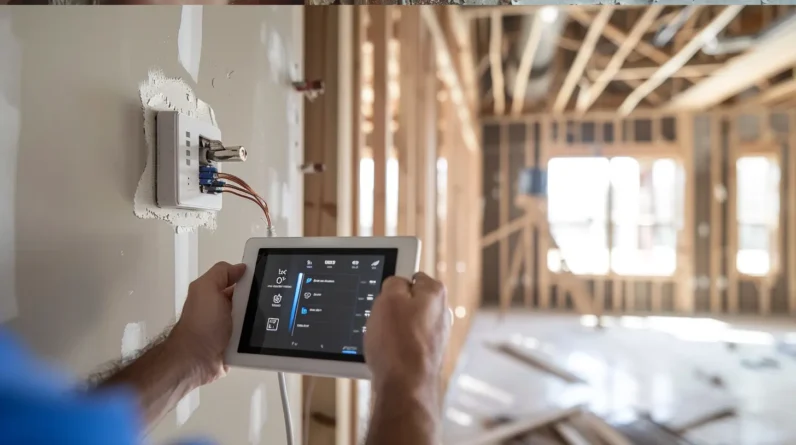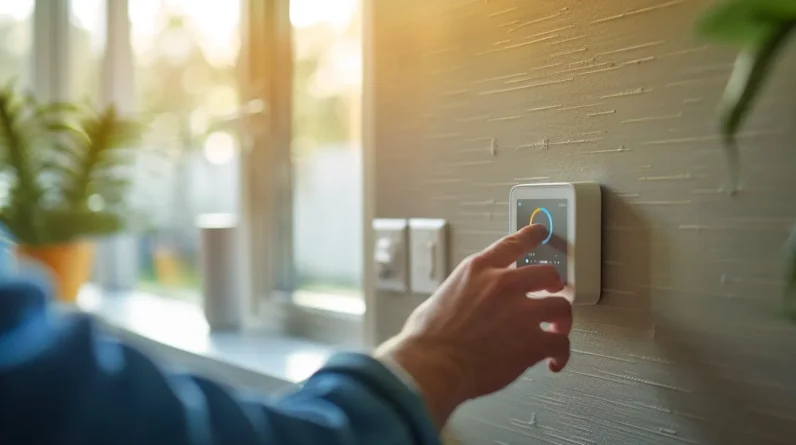
We can break down a smart device’s energy use into its components, with processors accounting for up to 40% of total energy consumption, followed by displays at around 30%, and communication modules at 20%. To optimize energy efficiency, we employ power management techniques like dynamic voltage scaling and clock gating. We also leverage software to analyze usage patterns and minimize energy waste. By understanding these factors, we can activate strategies to reduce energy consumption and create more sustainable smart devices. As we explore further, we’ll uncover more opportunities for improvement.
Components of a Smart Device and Their Energy Needs
Because smart devices are composed of numerous components, we need to understand the individual energy requirements of each to optimize overall energy efficiency. We analyze the energy consumption of key components, including processors, memory, display, and communication modules. Processors, typically the most power-hungry component, can account for up to 40% of total energy consumption. Memory modules, such as RAM and ROM, require lower power, around 10% of the total. Displays consume approximately 30% of the total energy, depending on the screen type and size. Communication modules, like Wi-Fi and Bluetooth, use around 20% of the total energy. By understanding these individual energy requirements, we can tailor optimization efforts to each component, ensuring overall energy efficiency. Analyzing these components allows us to pinpoint areas for improvement.
Power Management Techniques in Smart Devices
Having examined the energy consumption of individual components, we now turn our attention to power management techniques that can optimize smart device energy use. We’ll explore how techniques like dynamic voltage and frequency scaling, clock gating, and power gating can reduce energy consumption. These techniques allow us to adjust the voltage and frequency of components in real-time, shut down unused components, and gate off power to idle components. By leveraging these techniques, we can reduce energy waste and increase overall efficiency. Our goal is to minimize energy consumption while maintaining performance. By applying these power management techniques, we can achieve significant energy savings, extending battery life and reducing the environmental impact of our smart devices. By optimizing power management, we can create more sustainable smart devices.
The Role of Software in Energy Efficiency
While power management techniques can substantially reduce energy waste, optimizing energy efficiency in smart devices also relies heavily on the role of software. We’ve found that software plays a vital part in managing device operations. By leveraging algorithms and machine learning, we can analyze usage patterns and optimize system resources to reduce energy consumption. For instance, smart device software can automatically adjust screen brightness, turn off unused features, and regulate processing power based on workload. We can also leverage low-power modes and implement energy-aware protocols to minimize energy usage. By implementing these software-based strategies, we can substantially improve the energy efficiency of smart devices. This results in increased battery life, reduced heat generation, and lower energy costs.
Impact of Connectivity and Data Transfer on Energy Use
As we continue our exploration of energy efficiency in smart devices, it’s crucial to examine the impact of connectivity and data transfer on energy consumption. We need to analyze how data exchange protocols and communication technologies, such as Wi-Fi, Bluetooth, and cellular connectivity, affect power usage. Research has shown that data transfer can substantially contribute to energy consumption, particularly in devices with high data transmission rates. For instance, a study found that a smart device’s energy consumption increased by up to 30% when transferring large files over Wi-Fi. To mitigate this, we can optimize data transfer protocols, leverage low-power communication technologies, and implement smart data caching strategies. By doing so, we can reduce the energy footprint of smart devices without compromising their functionality.
Energy Harvesting Technologies for Smart Devices
Because energy efficiency is a critical concern in the development and deployment of smart devices, we are turning our attention to innovative solutions that can help reduce their energy footprint. Energy harvesting technologies offer promising avenues for powering these devices by converting ambient energy into usable electrical energy. Techniques such as photovoltaic cells for solar energy, piezoelectric materials for mechanical stress, and thermoelectric generators for heat conversion are at the forefront of this revolution. By integrating these technologies, we can substantially extend the battery life of smart devices or even achieve self-sustaining operations, thereby minimizing their environmental impact and operational costs.
Challenges in Measuring and Comparing Energy Efficiency
We’ve explored the potential of energy harvesting technologies to reduce the energy footprint of smart devices, but to fully leverage these innovations, we need to accurately assess their energy efficiency. This is no simple task. We’re faced with a myriad of devices, each with unique functionalities and energy requirements. Establishing a universal metric for comparison is challenging, yet vital. We must consider not just the active power consumption, but also standby and idle modes. Additionally, the energy consumption over the device’s lifecycle, including manufacturing and disposal, must be factored in. Only then can we make informed decisions to optimize energy use.
Strategies for Reducing Energy Consumption in Smart Devices
While developing energy-efficient smart devices poses significant challenges, adopting strategies to minimize power consumption can yield substantial benefits. We focus on reducing energy consumption in several key areas: hardware, software, and system-level design. By optimizing device hardware, we can decrease power-hungry component usage and adopt low-power alternatives. On the software side, we can implement power-saving techniques like dynamic voltage and frequency scaling. System-level design strategies, such as power gating and idle modes, also play a vital role. Additionally, leveraging advanced power management ICs and energy-harvesting technologies can further reduce energy consumption. By integrating these strategies, we can develop smart devices that not only reduce energy waste but also enhance overall performance and user experience. Our goal is to achieve a seamless balance between functionality and sustainability.
Conclusion
As we optimize smart devices for energy efficiency, we find ourselves balancing functionality and sustainability. On one hand, advanced power management techniques and energy harvesting technologies reduce consumption. On the other, increasing connectivity and data transfer demands ramp up energy use. Between these opposing forces, software plays a vital mediating role. By implementing strategic energy-reducing measures, we can minimize the environmental impact of smart devices while preserving their performance and capabilities.







